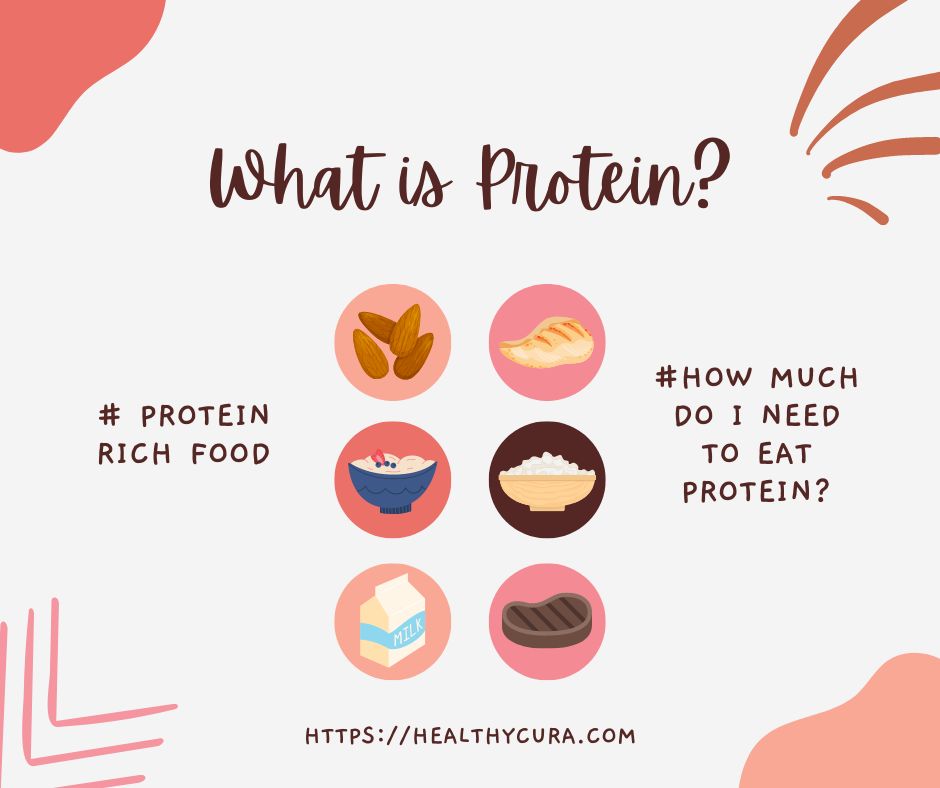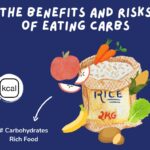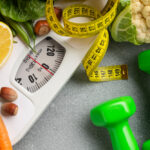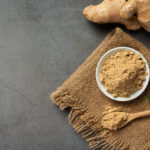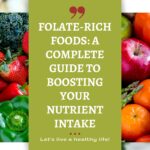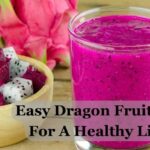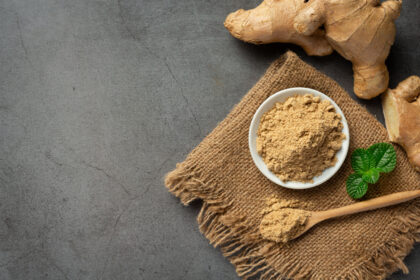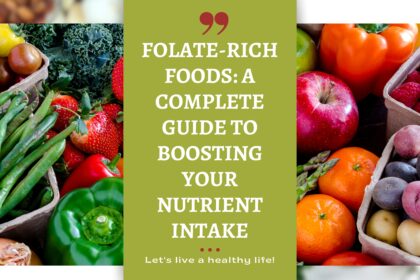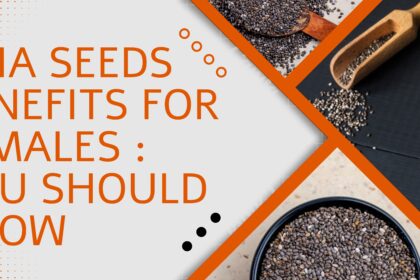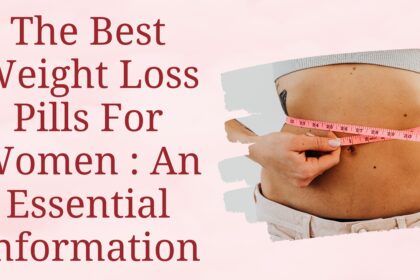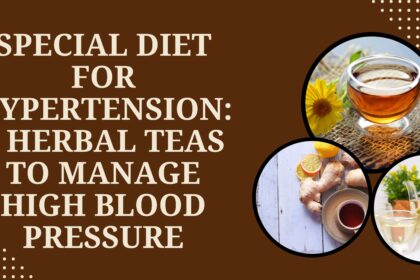Proteins are an essential part of our diet and are necessary for the proper function of our bodies. But what exactly are proteins? How much protein do we need? And how can we make sure we’re getting enough?
Protein is one of the most important macro-nutrients we need to ensure we get in our daily dietary needs.
In fact, protein makes up between 10% and 15% of the total calories you take in. If you don’t think you’re getting enough, consider adding it to your diet!
In this post, we’ll explore what proteins are, how much protein you need, and some easy ways to get more protein into your diet.
What is Protein?
Protein is a macronutrient that our bodies require to grow and repair.
It is made up of amino acids, which serve as the building blocks of our cells.
There are many different types of protein, but they all have one thing in common: they contain nitrogen.
Protein foods are typically high in nitrogen, and when we eat them, our bodies use the nitrogen to make new proteins.
Protein is found in all sorts of foods, including meats, poultry, fish, eggs, dairy products, beans, nuts, and seeds.
It is also found in some plant-based foods such as quinoa and soy.
The quantity of protein we require is determined by several factors, including our age, exercise level, and muscle mass.
Generally speaking, most people need between 0.36 and 0.45 grams of protein per pound of body weight per day.
Athletes or people who are trying to build muscle may need more protein than this.
Getting enough protein is important for maintaining healthy body weight, preventing muscle loss as we age, and reducing our risk of chronic diseases such as obesity and type 2 diabetes.
What Is Protein Food?
Protein meals are an essential component of a balanced diet.
They help build and repair tissues, produce hormones and enzymes, and provide the structure for our bones and muscles.
Proteins are made up of amino acids, which are the building blocks for all the cells in our bodies.
There are 20 different amino acids that can be combined to make a protein, and each has a specific role.
9 of the 20 amino acids can be made by the body, so we don’t need to get them from our diet.
These are called non-essential amino acids.
The other 11 amino acids are called essential amino acids because we must get them from food.
Amino acids that we must get from food are histidine, isoleucine, leucine, lysine, methionine, phenylalanine, threonine, tryptophan, and valine.
You can get protein from many different kinds of foods including meat, fish, poultry, eggs, milk dairy products, legumes (beans and peas), nuts, and seeds.
What Is the Function of Protein?
Proteins are essential nutrients for the human body. They really provide the foundation for our muscles, bones, skin, and blood.
Proteins are made up of amino acids. As we spoke before, there are 20 different amino acids that can be combined to form a protein.
Protein is required by the human body for a variety of tasks.
Protein is necessary for muscle growth and repair, bone health, immune function, and more.
It is important to eat a variety of proteins to get all the essential amino acids your body needs.
It is also important to eat enough calories to meet your energy needs.
A high-protein diet might be unsafe for your health.
Why Eat Protein?
Protein is a macronutrient that our bodies demand to operate correctly.
It’s involved in countless biochemical processes, including building and repairing tissues, making enzymes and hormones, and providing structure to cells.
A lack of protein can lead to muscle loss, weakness, and fatigue.
Eating enough protein is essential for maintaining healthy body weight, preventing illness and disease, and improving sports performance.
It’s important to eat a variety of protein-rich foods to reach the daily requirement of protein your body needs.
The average person needs 46 to 56 grams of protein per day.
The best way to make sure you’re getting enough protein is to include it in every meal and snack.
Add extra protein to smoothies and juices, top salads with chicken or fish, eat Greek yogurt for breakfast or a snack and cook with lean meats like chicken or turkey.
How Much Protein Do I Need?
How much protein do you need?
It depends on many factors, including your age, activity level, and muscle-building goals.
The National Academy of Sciences recommends that adults consume 0.8 grams (g) of protein per kilogram (kg) of body weight a day.
For example, a sedentary woman who weighs 68 kg (150 pounds) needs 54 g of protein a day.
An active man who weighs 79 kg (175 pounds) requires about 62 g of protein daily.
And if you want to build muscle mass, you may need even more—up to 1.2 to 1.7 g per kg of body weight, or up to twice the RDA.
Consuming adequate protein is especially important for athletes, older adults, and people recovering from illness or injury.
Protein needs also increase during pregnancy and lactation.
You can get the protein you need from animal sources such as meat, poultry, fish, eggs, and dairy products; from plant sources like beans and lentils; and from soy products such as tofu and tempeh.
You can also get it through supplements such as whey or casein protein powders or by eating foods that have been fortified with protein.
Types of Protein Foods
Protein-rich foods come in many forms, including animal-based sources like beef, poultry, and fish, as well as plant-based sources like beans, legumes, nuts, and seeds.
Animal-based proteins are typically complete proteins, meaning they contain all the essential amino acids your body needs.
Plant-based proteins are usually incomplete proteins but can be combined to form a complete protein.
Protein foods can also be classified based on their level of fat and cholesterol.
For example, lean protein sources like chicken breast and tofu are lower in fat and cholesterol than fatty protein sources like bacon and ribeye steak.
When choosing protein foods, it’s important to consider your overall dietary needs and goals.
For example, if you’re trying to lose weight, you may want to choose leaner protein sources that are lower in calories.
If you’re trying to build muscle mass, you may want to choose higher-fat protein sources that are richer in calories.
What Is Protein Whey?
Protein whey is a high-quality protein that contains all of the essential amino acids your body needs to build and maintain muscle mass.
It is quickly absorbed by the body, making it an ideal post-workout recovery supplement.
Protein whey can also help you lose weight by keeping you feeling full and satisfied after meals.
What is Protein Isolate?
Protein isolate is a highly purified form of protein that has been isolated from other food sources.
It is usually made from soy or whey and is often used as a dietary supplement.
Protein isolate is often used by athletes and bodybuilders to help increase muscle mass, and can also be used to help people lose weight.
Why Getting Enough Protein is Important?
Protein is crucial for our bodies to operate normally.
It is the main component of our muscles, bones, skin, and hair.
Getting enough protein is important for maintaining our muscle mass, bone density, and immune system.
Protein is also necessary for proper metabolism and hormone function.
Our bodies use protein to make enzymes and hormones that are necessary for many of our body’s processes.
Not getting enough protein can lead to muscle loss, weakness, fatigue, and a decrease in immunity.
It can also slow down your metabolism and make it harder to lose weight or build muscle.
Getting enough protein is especially important if you are active or trying to build muscle.
Active people need more protein because their muscles are constantly breaking down and rebuilding. Protein aids in the repair and rebuilding of muscle tissue.
The best way to get enough protein is to eat a variety of protein-rich foods every day.
Good sources of protein include meat, poultry, fish, beans, eggs, nuts, and dairy products.
You can also get some protein from plant-based sources like soybeans, quinoa, and hemp seeds.
What is Protein Good For?
Protein is one of the three macronutrients (along with fat and carbohydrates), and it is essential for human health.
Every cell in the body contains protein, which is used for a variety of purposes, including:
- Building and repairing tissues
- Making enzymes and hormones
- Strengthening immunity
- Providing energy
Protein may be discovered in a variety of foods, including meat, chicken, fish, eggs, dairy, beans, nuts, and seeds.
It is essential to ingest a range of protein-rich meals in order to obtain all of the necessary amino acids your body requires.
Amino acids are the building blocks of proteins, and there are 20 different amino acids that must be obtained through diet.
The Many Health Benefits of a Higher Protein Diet
A high-protein diet has many health benefits including weight loss, reduced appetite, and increased muscle mass.
Protein is a macronutrient that is required for several metabolic reactions in the body. It is composed of amino acids, which serve as the base for all tissues in the body.
When you eat a food that contains protein, your digestive system breaks down the protein into its component amino acids.
These amino acids are then used by your cells to build new proteins or to be used as fuel for energy production.
There are many different types of proteins in the foods we eat, and they all have different functions in the body.
How to Eat More Protein?
If you’re looking to up your protein intake, there are a few simple ways to do so.
First, make sure that you’re including protein-rich foods at every meal.
This means opting for lean meats, eggs, dairy, beans, or nuts at breakfast, lunch, and dinner.
You can also snack on protein-rich foods like yogurt or string cheese throughout the day.
In addition to increasing your protein intake at meals, you can also supplement your diet with a protein powder.
Protein powders are a convenient way to get an extra boost of protein without having to eat more food.
Simply mix a scoop of powder into your favorite beverage and enjoy.
Foods High in Protein
Protein is an important macronutrient that is required for numerous biological activities.
Foods high in protein provide the body with the amino acids it needs to perform these functions.
There are many different types of food that are high in protein, including meats, poultry, fish, eggs, dairy products, legumes, nuts, and seeds.
Protein-rich foods vary in their nutrient profiles, so it’s important to choose a variety that fits your individual needs.
For example, red meat is a good source of protein but is also high in saturated fat, while the chicken is lower in fat but contains less iron than red meat.
Eating a diet that includes a variety of protein-rich foods is the best way to ensure you’re meeting your body’s needs.
The amount of protein you require is determined by factors such as your age, exercise level, and muscle mass.
Athletes or people who have very active lifestyles may need more protein than sedentary people.
And as we age, our bodies become less efficient at using protein, so older adults may need to consume slightly more than younger adults.
If your diet does not provide enough protein. Check our list of 15 Healthy Protein Rich Foods that you can simply add to your diet.
Staying Healthy with Protein
Protein is an essential component of a nutritious diet.
To increase your protein intake, try these tips:
- Eat more lean meats such as chicken and turkey breast.
- Eggs can be consumed for breakfast or as a snack.
- Add cottage cheese or Greek yogurt to your diet.
- Make a smoothie with milk or soy milk and add some nuts or seeds.
- Snack on nutrient-rich foods such as hard-boiled eggs or edamame.
- Use a protein powder to make a high-protein drink
By following these protein intake tips, you can have more amount of protein-rich foods that can keep you healthy for longer age.
How a Protein Is Made?
Proteins are made up of amino acids, which are the building blocks of all cellular life.
There are 20 different amino acids that can be used to make a protein, and these 20 amino acids are joined together in long chains.
The sequence of amino acids in a protein is determined by the sequence of nucleotides in the DNA that codes for that protein.
Transcription of DNA results in RNA, which is subsequently translated into proteins.
Protein synthesis is the process of creating a protein.
It begins with the DNA being transcribed into RNA. Thereafter, the RNA is translated into proteins.
The translation is the process of decoding the RNA and assembling the amino acids in the correct order to make a protein.
Recipes with Protein
We need protein for many different functions in our bodies, but most people don’t eat enough of it.
If you’re looking to increase your protein intake, there are many delicious recipes that can help you do so.
Here are some of our favorites:
Grilled Chicken with Mango Salsa
This tropical twist on the classic grilled chicken is sure to please.
The mango salsa is not only beautiful but also adds a boost of flavor and nutrients.
Salmon with Avocado Sauce
Salmon is a great source of protein and healthy fats.
This recipe pairs it with a creamy avocado sauce for a complete meal that’s both healthy and delicious.
Quinoa Salad with Black Beans and Corn
This hearty salad is perfect for lunch or dinner.
It’s packed with protein from quinoa, black beans, and corn, and it’s tossed in a light dressing made with olive oil and lime juice.
Turkey Burger with Sweet Potato Fries
These burgers are juicy and full of flavor.
They’re served with crispy sweet potato fries for a complete meal.
Spicy Lentil Soup
This soup is hearty and filling, but it’s also packed with protein from the lentils.
It gets a little heat from the addition of chili pepper, and it’s garnished with cilantro and lime for extra flavor.
Alternative Uses for Protein
Protein isn’t just for bodybuilders and people trying to gain muscle mass.
It’s an essential nutrient that everyone needs to stay healthy.
Here are some alternative uses for protein:
Boosting your immune system
Protein is essential for the production of antibodies, which help fight off infection.
Healing wounds
Protein is involved in the production of collagen, which is necessary for wound healing.
Keeping your skin healthy
Collagen isn’t just important for healing wounds, it’s also crucial for maintaining healthy skin.
Regulating blood sugar levels
Protein helps regulate insulin levels, which can help keep blood sugar levels under control.
Reducing inflammation
Some proteins have anti-inflammatory properties, which can help reduce swelling and pain throughout the body.
Conclusion
Protein is an essential macronutrient that plays a role in various functions throughout the body.
While protein needs vary based on factors such as age and activity level, most people need approximately 0.36 grams of protein per pound of body weight (or 0.8 grams per kilogram).
To increase your protein intake, consider adding high-protein foods to your diets such as meats, eggs, dairy products, legumes, nuts, and seeds. You can also boost your protein intake by drinking protein shakes or taking protein supplements.
